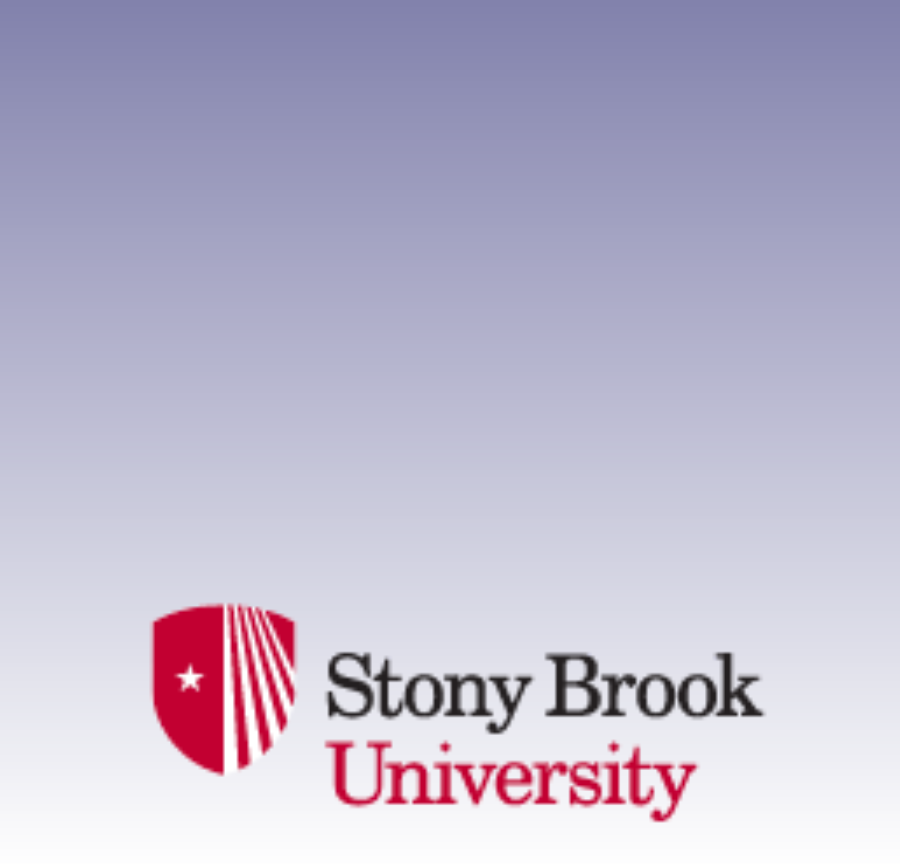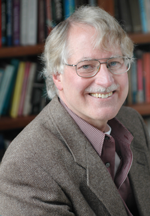 Director
Director
Ken A. Dill is interested in the physics of how proteins fold; the microscopic origins of the unusual physical properties of water; the foundations and applications of variational entropy-based principles in statistical physics; and how the laws of physics constrain and enable the biological properties and evolution of cells. Ken is Distinguished Professor of Physics and Chemistry at Stony Brook. (Click here to watch my video) citations
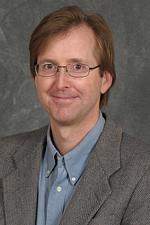 Associate Director
Associate Director
Carlos Simmerling develops new algorithms and energy functions using state-of-the-art computers for accurate and efficient simulation of large systems of biological molecules. He also applies these methods to systems where conformational dynamics are important for function, such as slow ligand binding and the recognition and repair of DNA. Carlos is a Professor of Chemistry at Stony Brook.
Affiliated Faculty
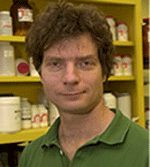
Bruce Futcher researches the logic and control of cell growth and cell division circuitry, a problem that is related to the uncontrolled growth of cancer cells. In collaboration with Eckard Wimmer, Steffen Mueller and Steve Skiena, he is developing methods for creating weak synthetic viruses, which may be useful in therapies as well as biological research. Bruce is an Associate Professor of Genetics & Microbiology at Stony Brook.
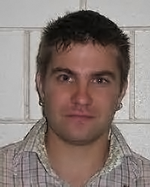 David Green is studying signaling in the G-protein pathway, to understand the specificity of protein-protein interactions; and how the HIV-1 virus recognizes its target cells, to learn how glycosylation modulates protein interactions. David is an associate professor of Applied Mathematics and Statistics at Stony Brook.
David Green is studying signaling in the G-protein pathway, to understand the specificity of protein-protein interactions; and how the HIV-1 virus recognizes its target cells, to learn how glycosylation modulates protein interactions. David is an associate professor of Applied Mathematics and Statistics at Stony Brook.
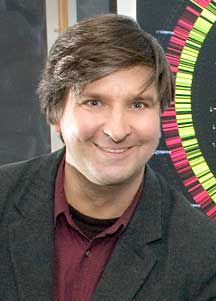 Sergei Maslov researches the properties of complex networks of interactions between biological molecules, using the power of simple models to understand how they function, evolve, and withstand the impact of noise and perturbations. Sergei is a tenured scientist at Brookhaven National Laboratory.
Sergei Maslov researches the properties of complex networks of interactions between biological molecules, using the power of simple models to understand how they function, evolve, and withstand the impact of noise and perturbations. Sergei is a tenured scientist at Brookhaven National Laboratory.
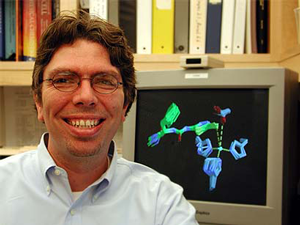 Robert Rizzo For efficient and effective drug design, the Rizzo group develops and applies computational algorithms and protocols in atomic-level modeling of how drugs bind to proteins. Rob is an Associate Professor in Applied Mathematics and Statistics at Stony Brook
Robert Rizzo For efficient and effective drug design, the Rizzo group develops and applies computational algorithms and protocols in atomic-level modeling of how drugs bind to proteins. Rob is an Associate Professor in Applied Mathematics and Statistics at Stony Brook
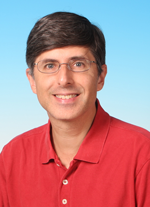 Steve Skiena designs combinatorial algorithms for biology, particularly for analyzing the sequences and assembly of biological molecules and for designing synthetic genes. Steve is a Professor of Computer Science at Stony Brook. (Click here to watch my video)
Steve Skiena designs combinatorial algorithms for biology, particularly for analyzing the sequences and assembly of biological molecules and for designing synthetic genes. Steve is a Professor of Computer Science at Stony Brook. (Click here to watch my video)
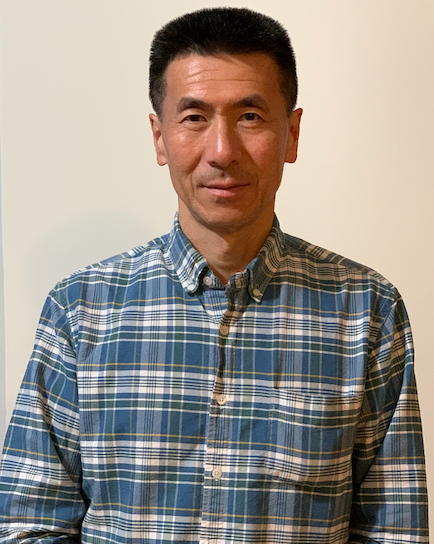 Jin Wang studies the physics and chemistry of biomolecules and networks with a focus on the mechanisms of protein folding,biomolecular recognition and biological networks. He uses modern statistical mechanics, simulations, and empirical information from databases to study the detailed processes involved. Jin is an Associate Professor of Chemistry and Physics at Stony Brook.
Jin Wang studies the physics and chemistry of biomolecules and networks with a focus on the mechanisms of protein folding,biomolecular recognition and biological networks. He uses modern statistical mechanics, simulations, and empirical information from databases to study the detailed processes involved. Jin is an Associate Professor of Chemistry and Physics at Stony Brook.
 Michael Schatz develops high performance algorithms for large-scale sequence analysis, including open source informatics tools for comparative genomics and genome assembly across the tree of life. He is studying mutations associated with autism, structural variations in esophageal cancer, and developing improved methods for assembling plant genomes. Michael is an Adjunct Assistant Professor of Computer Science at Stony Brook.
Michael Schatz develops high performance algorithms for large-scale sequence analysis, including open source informatics tools for comparative genomics and genome assembly across the tree of life. He is studying mutations associated with autism, structural variations in esophageal cancer, and developing improved methods for assembling plant genomes. Michael is an Adjunct Assistant Professor of Computer Science at Stony Brook.
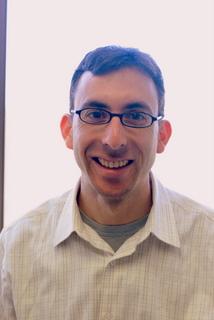 Joshua Rest investigates the extent that changes in the expression of genes result in changes in the fitness of cells. He is examining the fitness costs for expressing certain genes at the same time, and the persistence of variations caused by genetic mutations. Joshua is an Assistant Professor of Ecology and Evolution at Stony Brook. (Click here to watch my video)
Joshua Rest investigates the extent that changes in the expression of genes result in changes in the fitness of cells. He is examining the fitness costs for expressing certain genes at the same time, and the persistence of variations caused by genetic mutations. Joshua is an Assistant Professor of Ecology and Evolution at Stony Brook. (Click here to watch my video)
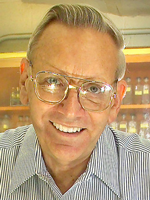 F. William Studier’s research has centered on the interactions and shapes assumed by DNA, and on the molecular genetics and biochemistry of bacteriophage T7, a virus that infects E. coli bacteria and is an important research tool. E. coli bacteria are normal inhabitants of the human intestine, where they aid digestion, but some E. coli strains cause mild or serious human diseases. Recent work is aimed at understanding mechanisms of bacterial evolution by comparing genome sequences of different strains of E. coli.
F. William Studier’s research has centered on the interactions and shapes assumed by DNA, and on the molecular genetics and biochemistry of bacteriophage T7, a virus that infects E. coli bacteria and is an important research tool. E. coli bacteria are normal inhabitants of the human intestine, where they aid digestion, but some E. coli strains cause mild or serious human diseases. Recent work is aimed at understanding mechanisms of bacterial evolution by comparing genome sequences of different strains of E. coli.
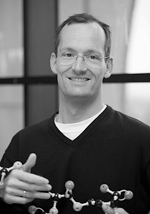 Markus Seeliger works to understand the molecular mechanisms of signaling proteins, and how small molecule ligands and drugs can modulate their activity. Markus is an Assistant Professor of Pharmacological Sciences at Stony Brook Medical School. (Click here to watch my video)
Markus Seeliger works to understand the molecular mechanisms of signaling proteins, and how small molecule ligands and drugs can modulate their activity. Markus is an Assistant Professor of Pharmacological Sciences at Stony Brook Medical School. (Click here to watch my video)
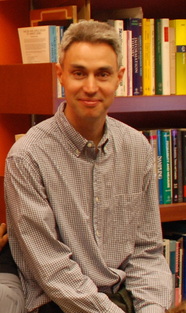 Tom MacCarthy researches Evolutionary Systems Biology and Computational Immunology, often in close collaboration with experimental biologists. A primary interest is computational modeling of antibody diversity, specifically in Immunoglobulin genes. He is applying this study to B-cell lymphomas such as chronic lymphocytic leukemia (CLL). Tom also uses computational models to investigate the evolution of robust gene regulatory networks and to study how the gene networks that control sex determination evolve. Tom is an Assistant Professor in the Department of Applied Mathematics and Statistics at Stony Brook.
Tom MacCarthy researches Evolutionary Systems Biology and Computational Immunology, often in close collaboration with experimental biologists. A primary interest is computational modeling of antibody diversity, specifically in Immunoglobulin genes. He is applying this study to B-cell lymphomas such as chronic lymphocytic leukemia (CLL). Tom also uses computational models to investigate the evolution of robust gene regulatory networks and to study how the gene networks that control sex determination evolve. Tom is an Assistant Professor in the Department of Applied Mathematics and Statistics at Stony Brook.
Laufer Junior Fellows
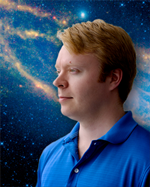 Christopher J. Fennell studies condensed matter molecular systems. He is working on new models for solvation, detailed free energy calculations, and protein-ligand interactions.
Christopher J. Fennell studies condensed matter molecular systems. He is working on new models for solvation, detailed free energy calculations, and protein-ligand interactions.
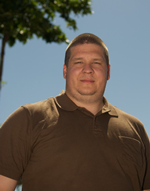 Justin MacCallum studies the structure, function and dynamics of proteins. He is working on protein structure refinements using a hybrid approach that combines detailed molecular dynamics simulations with distance restraints derived from bioinformatics.
Justin MacCallum studies the structure, function and dynamics of proteins. He is working on protein structure refinements using a hybrid approach that combines detailed molecular dynamics simulations with distance restraints derived from bioinformatics.
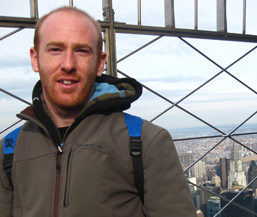
Alberto Perez's current research involves the use of physics to understand protein folding. Knowledge-based algorithms are quite successful at predicting the 3D protein structures that a sequence of amino acids will adopt. However, we would like to understand the physics governing this process at an atomic level. That understanding might lead to insights into kinetic routes, and the effects of solvent, temperature, etc. on protein folding, and give us the opportunity to compare atomistic ensembles with the overall processes seen experimentally. We use a variety of computational modeling techniques, ranging from geometric packing to Molecular Dynamics atomistic simulations to describe and better understand this process. In the past I’ve also worked on DNA flexibility, and it is a subject that I’m still very interested in.

